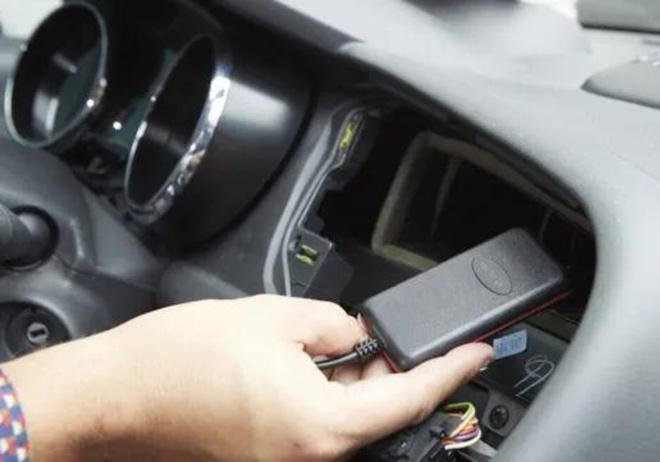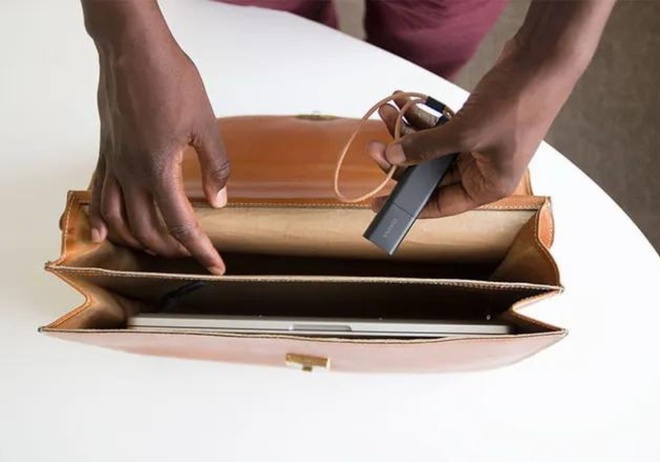What about GPS trackers without a SIM card?
Should you choose a GPS tracker with or without a SIM card? This article will answer all your questions and help you understand the differences between the two products. We’ve got everything you need to know to choose the right tracker.

Reading time : 7 min
“GPS without a SIM card” is a quite a broad way to describe this type of tracker, as it actually refers to two different types of products:
- Devices connected via traditional networks (2G, 3G, 4G) which are sold without a SIM card but which require one to be able to work. It's the same principle as a GPS tracker with a subscription but the SIM card isn't provided by the manufacturer.
- Subscription-free devices that don't require a SIM card to work, as they use the Sigfox and Lora networks (public frequencies), Bluetooth technology, or any other subscription-free technology.
Learn more about these two types of GPS trackers with no SIM card, their advantages and disadvantages, as well as the recommended uses for each of them, in this article.
SUMMARY
GPS tracker with no SIM card but with a subscription

The main idea of a GPS tracker sold without a SIM card
GPS trackers without a SIM card work using traditional networks (2G, 3G, 4G). Accessing these networks on your no SIM card GPS tracker works just like a mobile phone. You buy a phone on its own from a shop, then you take out a subscription with an operator who gives you a SIM card that you put in your phone to be able to make calls, receive SMS messages and use the Internet.
The advantages and disadvantages of a tracker without SIM
The main advantage
This type of GPS tracker without a SIM works in exactly the same way as devices with a subscription, except that the SIM card is not supplied by the manufacturer. This has the advantage that you can select the SIM card and operator of your choice, as well as being in control of the related costs.
The drawbacks
This SIM card will only work on one network. That means more privacy concerns and less data protection, especially if the operator lacks strong data security policies. Dead zones are common, since coverage depends on a single provider. These trackers often don’t meet proper regulations or include clear user consent features. Low-cost models are usually imported. They’re rarely certified for legal purposes and don’t mention whether tracking consent is needed when used on another person. There is no dedicated mobile app or after-sales support. Some only offer SMS tracking, which may not follow best practices for privacy and security. Accessories are basic and may not comply with usage norms. These limitations make them risky in settings where responsible use is expected or permits or licenses are required.
They’re best used as backups for static objects like bikes or scooters, not living beings. Even in those cases, a Sigfox or Lora tracker offers better peace of mind.
GPS tracker with no SIM card and without a subscription

A GPS tracker without a SIM card can also mean a GPS tracker without a subscription and therefore not requiring a SIM card to work. It would be more accurate to call it a GPS tracker without a subscription.
Low power GPS trackers for vehicles
There are GPS trackers with no subscription connected to public networks (Sigfox and Lora), also known as IoT sensors or “low power networks”. These are ideal for vehicle and asset security. They are used in fleet management, smart agriculture, and environmental monitoring, where offline tracking and long battery life are essential. These GPS trackers are perfect for asset tracking in case of theft or loss. They allow you to find where your bike, scooter, or car has been moved after it disappears. You don’t need real-time location in many use cases. The goal is to check the last known position. That’s why these models are used in theft recovery or industrial and research uses. This kind of GPS tracker, sold without a subscription and for around £90, suits those looking for a practical solution with low ongoing costs and efficient proximity tracking. Subscription-free GPS trackers are generally compact and lightweight. They’re a discreet and affordable way to track personal vehicles or IoT applications remotely. They often come with robust batteries. So you won’t have to recharge them often, even if they’re installed in equipment or used for personal and pet tracking. This tracking system is a smart choice for many fields. It combines practical technology with adaptable features for both everyday use and professional applications.
Bluetooth item finder
Items lost indoors
There are GPS trackers on the market that don't require a subscription, smart keyrings that use Bluetooth to find your belongings indoors, like your keys or your wallet. One example is the Apple Airtag, which uses Bluetooth technology. This compact smart keyring will allow you to keep track of your keys, mobile phone or wallet, even if they've slipped down the back of the sofa, thanks to a handy ringer function.
You can also find your belongings by using the hot and cold rule: the stronger the Bluetooth signal, the closer you are to the tracker. Remember though that the range of this type of device is only a maximum of 50 metres (in an open space with no walls or obstacles). This geolocation system makes finding something at home child’s play. Smart keyrings are easy to use and usually come with a free app.
Items lost outdoors
Bluetooth GPS receivers help find items outdoors. But since they lack encryption or network security, data protection is limited compared to more secure tracking solutions. These gadgets don’t use GPS modules or SIM cards. They rely on your phone’s location, raising privacy concerns if shared or used without tracking consent. If another person finds the tracker, you might unknowingly receive location data. This can lead to unintentional breaches in privacy and security.
Most trackers don’t ask for user consent before recording movement history. This is why responsible use is essential, especially in shared or public spaces. Some countries apply specific regulations or may require permits or licenses for personal tracking devices used outdoors or near sensitive areas.
These devices are best suited for personal use only. For legal purposes, always check that your tracker complies with local laws before outdoor deployment.
Things to check before buying a GPS
18 questions you need to ask yourself before buying a GPS tracker for your loved ones!
The special case of GPS devices without a SIM for cats and dogs

The various technologies mentioned above are not suitable for tracking an animal. Either because they don't allow real time tracking, or because they only work over a limited distance. So what choice do you have for keeping your dog or cat safe?
Radio trackers for cats and dogs
You can also get radio trackers for cats and dogs. These devices consist of a receiver and a transmitter that communicate with each other through radio frequencies, allowing you to track your dog or cat. This frequency has a maximum range of a couple of miles at most. So although there's an issue with range, it's no way near as bad as with Bluetooth trackers.
On the other hand, the tracking has the benefit of being real time, just with one major drawback: you can't track using your phone, only the radio receiver. This limits the number of possible users to one person: the person with the radio receiver.
It's worth mentioning that this type of tracking device is extremely expensive, with Garmin being the best known brand. Most commonly used for hunting, these trackers can cost several hundred pounds. We don't recommend using this kind of product to find your lost dog or cat except in very specific cases, in dense woodland for example, where the risk of a dead zone is much higher.
Why choose a GPS collar with subscription for your cats and dogs?
GPS collars for cats and GPS collars for dogs come with a SIM card included when you buy them. This SIM card means that the manufacturer has to provide a dedicated phone line for each device sold, which means that a subscription is required to access the service. This SIM card limits the number of dead zones, as it is almost always multi-operator and multi-country. As long as there is a mobile phone network available, you'll be able to use the GPS system.
This type of product also allows real time tracking over an unlimited distance; two essential features for peace of mind as animals are always on the move. Tracking your lost dog's movements in real time is crucial, especially if they are stressed or frightened. Our cat and dog GPS collars are specially designed to do exactly that.
A lost pet won't stay in one place, so you'll need to see their exact location on your mobile app as well as their position on the map. GPS tracking can also be combined with other features like ringing or vibrating which can be extremely useful for training your dog or cat, for example. You can also set a safety boundary, so the app will let you know if your dog or cat leaves a particular area. Finding your furry friend's exact location has just become a walk in the park.
Conclusion
It’s vital to define your needs before buying a GPS tracker. Do you want smart tracking for a pet, real-time tracking for a vehicle, or sim-less GPS for your keys or kids?
New solutions like non-SIM tracking are growing fast. These devices use location services without SIM cards, tapping into low-power networks or Bluetooth. At the same time, emerging trends in tracker technology reveal a shift toward machine learning and artificial intelligence (AI) to boost tracking accuracy. AI can analyze user behavior and improve prediction of future movements. This is highly valuable for real-time tracking in changing environments. We are seeing more smart tracking devices using data analysis to make GPS trackers more responsive, reliable, and adapted to each use case.
Whether for pets, people or property, the integration of AI and machine learning is shaping the future of SIM-free GPS tracking with powerful new features.
Continue reading our guide
This article is part of a complete guide on the subject. Do not miss the next chapters.
Are you looking for the best GPS tracker ?
18 questions you need to ask yourself before buying a GPS tracker
